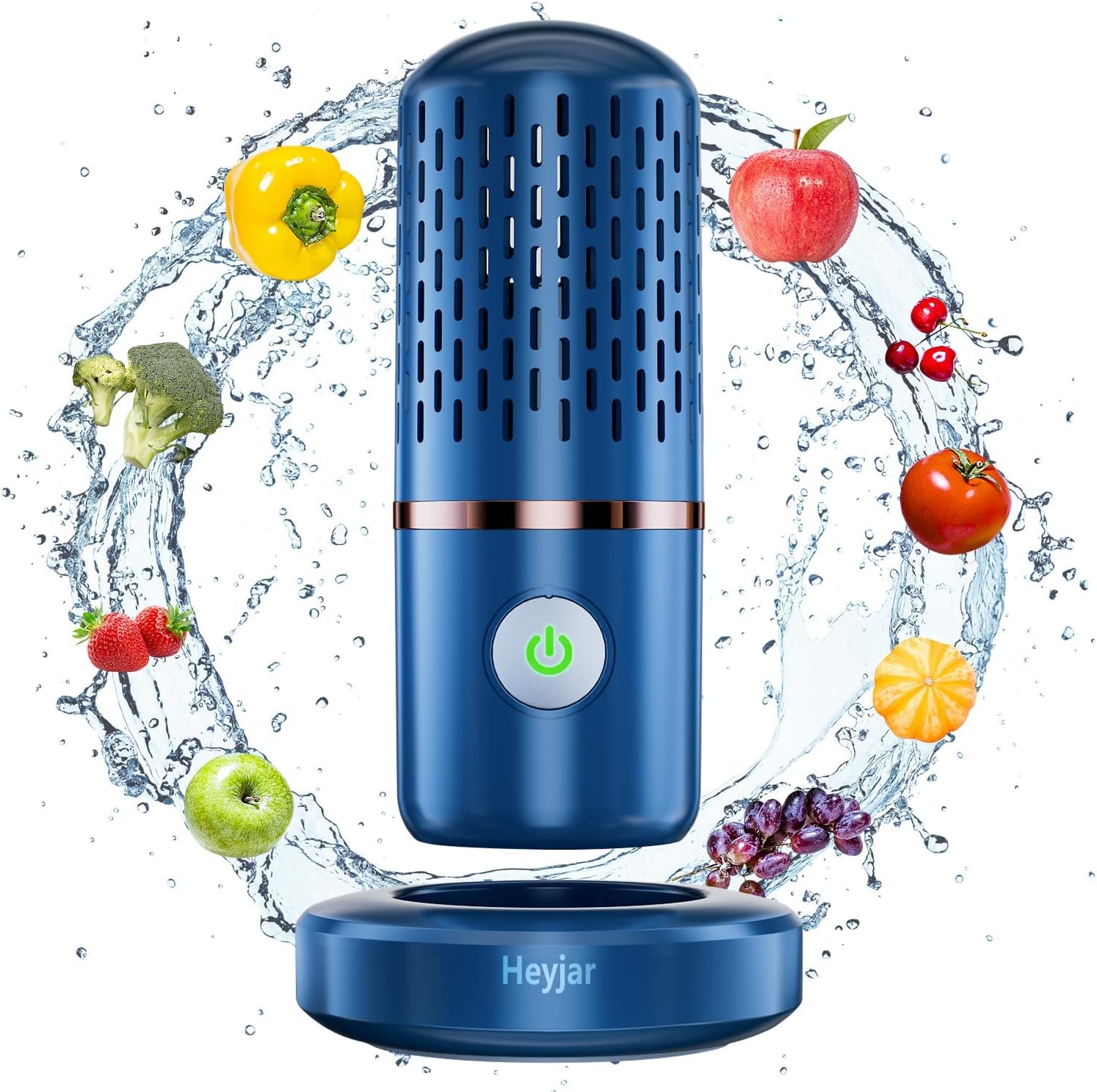Introduction
Harvesting and preparing your carrots for storage is a rewarding experience, especially when you’ve grown them yourself in your garden. The key to maintaining their freshness lies in the proper cleaning and storing methods. After pulling the carrots from the soil, it’s essential to clean them thoroughly. Begin by rinsing the carrots under running water, ensuring that all the dirt and debris are removed. Using a vegetable scrubber can help with this task, especially when dealing with the root vegetable’s porous skin. Once cleaned, carrots should be patted thoroughly with a clean towel before storage to prevent moisture from causing spoilage.
Storing carrots properly is just as important as cleaning them. Keep your carrots in a large perforated plastic bag and store them in the crisper drawer of your refrigerator. This method ensures that your carrots remain crisp and fresh for an extended period. Avoid storing carrots near fruits and vegetables like apples, as they emit ethylene gas, which can cause carrots to become limp. By following these simple steps, you can enjoy your homegrown carrots in their freshest state.
Key Takeaways
- Carrots should be harvested when their tops are about 1 inch in diameter to ensure optimal freshness.
- Properly trimming and brushing off dirt before storage helps keep carrots fresh for longer periods.
- Thoroughly scrubbing carrots under running water with a vegetable scrubber ensures they are clean and safe to eat.
- Storing carrots in a perforated plastic bag in the crisper drawer of the refrigerator helps maintain their crispness.
- Keeping carrots away from fruits like apples prevents them from spoiling due to ethylene gas exposure.
- Regularly checking stored carrots can help extend their shelf life and ensure they remain nutritious.
How to Harvest Carrots from Your Garden and Prepare Them for Storage

Carrots are typically ready to harvest when their tops are about 1 inch in diameter, usually around 70 to 80 days after planting. To ensure they’re at their peak, gently loosen the soil around the carrots before pulling them out. This helps avoid breaking the roots and keeps the carrots intact for storage. Timing your harvest correctly ensures that your garden carrots are packed with nutrients and ready for the next steps of cleaning and storing.
Best Practices for Harvesting, Storing, and Cleaning Carrots
1. Harvesting Carrots at the Right Time
To ensure the best flavor and nutritional content, harvest carrots when their tops are around 1 inch in diameter. This usually occurs 70 to 80 days after planting. It’s crucial to loosen the soil gently before pulling out the carrots to avoid breaking the roots. Proper harvesting timing guarantees that your garden carrots are packed with nutrients, making them perfect for storage and later consumption.
2. Preparing Carrots for Storage
After harvesting, properly preparing carrots for storage is key to extending their shelf life. Begin by trimming the green tops to about 1 inch above the root. This helps reduce moisture loss, keeping your carrots fresh for longer. Avoid washing the carrots immediately; instead, brush off any loose dirt gently. This step is essential to prevent excess moisture, which can cause spoilage during storage.
3. Best Practices for Cleaning Carrots
Thoroughly cleaning carrots is essential before storage or consumption. Start by rinsing the carrots under running water to remove any loose dirt. Use a vegetable scrubber to clean the porous skin of the root vegetable, ensuring that all dirt and debris are removed. After scrubbing, dry the carrots thoroughly with a clean towel to prevent moisture from causing them to spoil during storage.
When to Harvest Carrots for Optimal Freshness
Carrots are typically ready to harvest when their tops are about 1 inch in diameter, usually around 70 to 80 days after planting. To ensure they’re at their peak, gently loosen the soil around the carrots before pulling them out. This helps avoid breaking the roots and keeps the carrots intact for storage. Timing your harvest correctly ensures that your garden carrots are packed with nutrients and ready for the next steps of cleaning and storing.
Preparing Harvested Carrots for Storage
After harvesting, it’s crucial to prepare your carrots properly for storage. Start by trimming the green tops to about 1 inch above the root, which helps reduce moisture loss and keeps your carrots fresh for longer. Avoid washing them immediately after harvesting; instead, gently brush off any loose dirt. This step prevents excess moisture from causing the carrots to spoil during storage.
The Best Way to Clean Carrots: Step-by-Step Guide

To clean your carrots thoroughly, begin by rinsing them under cool, clean water to remove loose dirt and debris. Next, use a vegetable brush or a scouring pad to scrub the surface of the carrots, focusing on crevices where dirt can hide. It’s important to scrub your carrots thoroughly to ensure they’re safe to eat and ready to use in your favorite recipes.
Case Study: Effective Carrot Cleaning and Storage Practices at a Local Organic Farm
Background: A local organic farm in California, known for its sustainable farming practices, struggled with maintaining the freshness of their harvested carrots during storage. They noticed that despite using organic methods, many of their carrots became limp and lost their flavor during storage. This led to a significant loss in both product quality and revenue.
Approach: The farm decided to implement a new cleaning and storage method based on a step-by-step guide for cleaning carrots. They began by rinsing the carrots under cool, clean water to remove dirt and debris. The farmers then used a vegetable brush to thoroughly scrub the carrots, focusing on crevices where dirt can hide. Finally, the carrots were dried thoroughly with a clean towel before being stored in perforated bags within a cool, humid environment.
Results: After implementing these practices, the farm noticed a significant improvement in the shelf life and quality of their carrots. The carrots remained crisp and flavorful for a longer period, leading to increased customer satisfaction and reduced waste.
Scrubbing Carrots Clean Before Storage
To clean your carrots thoroughly, begin by rinsing them under cool, clean water to remove loose dirt and debris. Next, use a vegetable brush or a scouring pad to scrub the surface of the carrots, focusing on crevices where dirt can hide. It’s important to scrub your carrots thoroughly to ensure they’re safe to eat and ready to use in your favorite recipes.
Drying Carrots After Cleaning
Once you’ve cleaned your carrots, it’s time to dry them thoroughly. Use a clean towel to pat the carrots dry, removing as much moisture as possible. Properly drying your carrots helps prevent them from becoming limp or spoiling during storage. Well-cleaned and dry carrots are easier to store and maintain their freshness for a longer period.
Essential Tips for Storing Carrots: Keep Your Harvest Fresh

Storing carrots properly is key to keeping them fresh for months. Place the dry carrots in a perforated plastic bag and store them in the crisper drawer of your refrigerator. This method allows for proper air circulation, which helps prevent the carrots from becoming soft or spoiling. Storing carrots away from fruits like apples and pears is also important, as these fruits release ethylene gas that can cause carrots to spoil faster.
Choosing the Right Storage Method
Storing carrots properly is key to keeping them fresh for months. Place the dry carrots in a perforated plastic bag and store them in the crisper drawer of your refrigerator. This method allows for proper air circulation, which helps prevent the carrots from becoming soft or spoiling. Storing carrots away from fruits like apples and pears is also important, as these fruits release ethylene gas that can cause carrots to spoil faster.
Extending the Shelf Life of Your Carrots
To extend the shelf life of your carrots, it’s essential to monitor the storage environment. Ensure the storage area remains cool and humid, which helps keep your carrots crisp and fresh. If you notice any carrots becoming limp or discolored, remove them immediately to prevent them from affecting the others. Regularly checking your stored carrots helps you enjoy homegrown, nutritious carrots throughout the season.
“Proper storage of fresh produce isn’t just about keeping it edible; it’s about retaining the essence of what you’ve grown, ensuring every bite reflects the care you’ve put into your garden.”
— Eliot Coleman, The New Organic Grower
Why Properly Cleaning and Storing Carrots Matters for Ready-to-Eat Use

Well-cleaned carrots are not only safer to eat but also retain their full nutritional value. By thoroughly scrubbing carrots and removing all dirt and pesticide residues, you ensure that the carrots are ready to eat and provide all the essential vitamins and minerals they’re known for. Clean carrots are also more appealing in salads, soups, and as snacks, making them a staple in a healthy diet.
The Health Benefits of Well-Cleaned Carrots
Well-cleaned carrots are not only safer to eat but also retain their full nutritional value. By thoroughly scrubbing carrots and removing all dirt and pesticide residues, you ensure that the carrots are ready to eat and provide all the essential vitamins and minerals they’re known for. Clean carrots are also more appealing in salads, soups, and as snacks, making them a staple in a healthy diet.
Preventing Spoilage and Waste
Proper cleaning and storage techniques play a significant role in reducing food waste. By following the best practices for cleaning and storing carrots, you minimize the risk of spoilage and ensure that your carrots remain fresh and ready to eat for an extended period. This not only saves you money but also supports sustainable food practices by reducing the need to discard spoiled produce.
- Aquapur Fruit Cleaner Device
- Fruit Purifier
- OH-ion Purification Technology
- Cleaning Fruit,Vegetable,Rice
- Tableware (Blue)
Conclusion
Properly harvesting and storing your carrots is essential to enjoying their full nutritional value and freshness. By following the steps of rinsing them under running water, using a vegetable scrubber, and storing them in a perforated plastic bag away from fruits like apples, you can extend the shelf life of your veggies. This process ensures that your carrots stay crisp, safe to eat, and ready for your next meal.
Whether you’re dealing with grocery store carrots or those from your carrot patch, taking the time to give them a good scrub and store them properly will keep them fresh and nutritious. The key is in the details—like avoiding ethylene gas exposure and using a clean towel to dry them thoroughly. These simple practices will help you make the most of your homegrown root vegetables and enjoy their size and shape just as nature intended.

James Dunnington leads the James Dunnington Collection, featuring five unique blogs: a practical Pet Care Guide, an enlightening Ancient History Blog, a resourceful Home Improvement Guide, a cutting-edge Tech Innovation Guide, and a strategic Online Money Making platform. Each site delivers valuable insights designed to empower and inform. For updates and more tips, visit our Contact Us page to sign up for our newsletter, ensuring you never miss out on the latest content from any of these dynamic fields.

